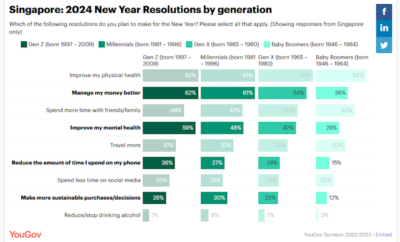
Insights + interviews
In Conversation With Senior Consultant Ophthalmologist Dr David Chan
We recently had a chat with Dr David Chan, a Senior Consultant Ophthalmologist at Atlas Eye Specialist Centre to find out more about the latest technique in laser vision correction.
An ophthalmologist with more than 16 years of experience, Dr David Chan is among the first few eye surgeons to be equipped with the necessary tools and skills to perform the latest technique in laser vision correction here in Singapore. We recently had a chat with him to find out more about the ReLEx SMILE (Refractive Lenticule Extraction, Small Incision Lenticule Extraction) procedure.
AA: Hi Dr Chan first and foremost, could you tell us the difference between ReLEx SMILE and other forms of LASIK?
DC: ReLEx SMILE offers a paradigm shift in how refractive errors are corrected. For previous generations of corneal laser vision correction, the cornea had to be reshaped by way of ablation (surgical removal of body tissue) either by stripping away its surface (Epi-LASIK) or cutting a large flap over the cornea (LASIK). In ReLEx SMILE, cornea laser vision correction is achieved via a single incision of 2mm in under 25 seconds. This incision is five times smaller than the ones in LASIK, but at the same time, it keeps the corneal surface largely intact. The advantages include a faster healing time, stronger corneas and post operation; a less likelihood of developing dry eyes. The absence of a flap also negates any possibility of the flap being dislodged, which is a concern in LASIK.
AA: Can you describe what you perform in a ReLEx SMILE surgery?

DC: ReLEx SMILE is a single laser procedure done under topical anaesthesia. Patients are given anaesthetic eye drops at the start. A gentle suction pressure is then applied by the laser on the eye, to keep both the laser and the eye fully aligned. The laser treatment lasts for approximately 24 seconds. Upon completion of the laser treatment, the suction is released and the surgeon simply removes a thin disc shaped tissue from a small 2mm incision. The procedure results in a change of the shape of the cornea leading to correction of the patient’s refractive error.
AA: Is this something revolutionary? Something that typically hasn’t been done before?
DC: ReLEx SMILE offers a completely different approach from previous generations of laser vision correction; differences between SMILE and the previous generations include:
- Compared to all previous laser vision correction techniques (i.e. PRK, Epi-LASIK, LASEK and LASIK), ReLEx SMILE is a purely femtosecond laser technique; dispensing with the need for corneal ablation via an excimer laser.
- The advantage of this technique include a treatment that has greater independence from environmental fluctuations giving rise to improvements in predictability of surgical outcomes.
- ReLEx SMILE aims to eliminate the problems of earlier generations of laser vision correction (such as flap complications from LASIK, and slow healing in Epi-LASIK) whilst offering the benefits of fast healing, maintaining healthy tear production and maintaining corneal structural integrity.
AA: Would you call this a medical breakthrough or just development through technology?
DC: ReLEx SMILE represents a breakthrough in laser vision correction that builds on the success of the two previous generations of laser technologies, namely LASIK and Epi-LASIK.
AA: In addition to the aesthetics, the reduction of time and the simplification of procedure, are you getting better outcomes with vision?
DC: Yes, patients are experiencing early improvements in dry eye recovery. Our results so far have shown that there have been high levels of accuracy across wide ranges of myopic and astigmatic corrections.
AA: Is this suitable for patients who are older? Those who are 45-years-old and above?
DC: ReLEx SMILE can be suitable for older adults provided there are no other age related eye conditions like cataracts, glaucoma or macular degeneration. It cannot, though, fully reverse the effects of presbyopia. Monovision may be employed as a means to mitigate the effects of presbyopia and reduce the dependency on reading glasses.
AA: What are the post ReLEx SMILE surgery care steps a patient should adhere to?
DC: The post operative care and recovery of ReLEx SMILE is similar to LASIK in that patients are advise to take three days off work, avoid washing of the eyes with tap water, as well as to use the post operative medications which include antibiotic, steroid and artificial tear drops. Patients are routinely reviewed at one day, one week and one month after the surgery. Functional vision is usually achieved within three days, with further improvements occurring over the next several weeks to months.









